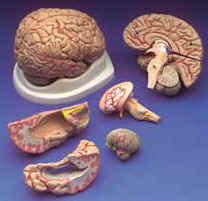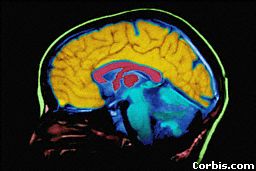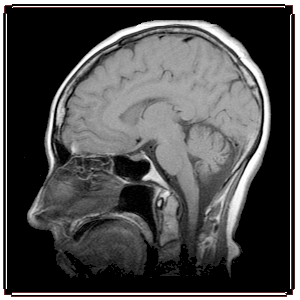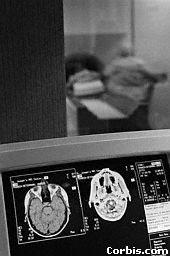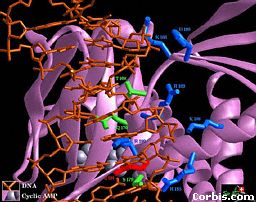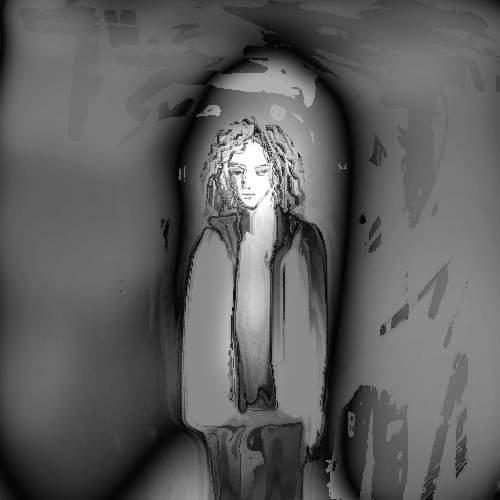Part 3: AUTISM AND BRAIN SYSTEMS |
|||
Dysfunctions in the centers of the “urge to love” |
|||
|
|
|||
| In the
last section we saw that it is plausible to hypothesize that there could be actual areas
of the brain that are concerned with interpersonal relations. If these centers of the
brain are damaged, it follows that the person will not experience the same “urge to
love” that a “normal” person would. By “normal” I mean a person
whose brain centers of interpersonal relations are functioning as they are meant to do. |
|||
| Of all the developmental disorders (and there are many! Asperger Syndrome and Landau-Kleffner Syndrome, to name a few), autism is perhaps the most fascinating, the most mysterious, and in many ways the most relevant to our discussion of love. | |||
| Autism is a complex developmental disability whose signs begin to appear in the first three years of a child’s life. For instance, autistic babies are very uncomfortable with being touched and arch their backs away from the person trying to pick them up. Also, they are often passive or overly agitated and avoid physical contact in general. As children they do not seek out to make friend and shun from any kind of social interactions. Another major characteristic of an autistic person is that he or she has problems with communication skills and in some cases has speech impairment. | |||
Autism used to be considered a
consequence of maternal depravation. This seemed plausible at the time since a lot
of behavioral studies indicate that children who are deprived of maternal touch and
affection do not develop normally. They often have inability to get close to others and
shun from touch. This again leads to a conclusion that the brain is a malleable entity
that can be influenced and changed structurally by various experiences. In the case of autism, however, it is now clear that the disorder has a genetic component. Also, it seems to be the case that specific areas of the brain are damaged in the autistic person.
|
|||
|
Significant number of advances have been made in the past few decades in regards to the
causes of autism. The various examination of brain anatomy and physiology of autistic
people gives us enough of a clue to the nature of this syndrome. The techniques that gave
the most information are actually pretty trusted brain imaging techniques such as magnetic
resonance imaging MRI, event related potential (EPR), as well as EEG measurements. I will
not go into the details of these techniques since for the purposes of this discussion, I
will outline the major research findings.
|
|||
| Scientists
can visualize brain areas of autistic people (using MRI images) as well as study how
active they are, i.e. how much electrical activity is seen (remember neurons communicate
through electrical signals!). Abnormal brain wave patterns can also be diagnosed by
analyzing the EEG patterns of autistic individuals during sleep. These finding are compared to brains of normal
individuals. After enough cases scientists can see which areas of autistic individuals
behave and look significantly different from “normal” brains. As I already mentioned, there is a genetic component involved in autism. In a significant subgroup of people with autism there seemed to be a genetic susceptibility that has been proposed to involve more than one gene and may differ across families. Although efforts are underway, actual genes for autism were not identified. These genes are considered to be involved in caring the genetic material that encodes the brain structures and biochemistry of an autistic individual. |
|||
| The
substantial research findings in the area indicate that there are actual functional and
structural abnormalities in several brain regions of autistic individuals. The regions are
very specific. They have been identified to be in the amygdala, hippocampus, septum,
mammillary bodies, and the cerebellum. Actual dysfunctions in the neural structures of
these areas has also been identified.
|
|||
| Interestingly, I came across some studies that point to the idea
that the actual biochemistry of these brain areas is also dysfunctional. It is somewhat
misleading to differentiate between dysfunctions in neural structure and biochemistry of
the brain. We already saw in Part
1, that chemicals influence behavior and in Part 2, I alluded to the idea that the way chemicals do this is
through their effect on actual brain areas. So we should keep in mind the interaction
between the neural structure (brain
organization) and the chemistry which takes place in its medium. What is important to note at this point is that autistic people, while they have problems with social interaction and communication skills, are quite intelligent. Most are perfectly capable of functioning in school at an intellectual level. This bring to the interesting observation that can be made: |
|||
|
|||
| So another thing which Kramer’s observations, as well as research on autism, teaches us is that the brain must be organized in such a way that we are capable of the “urge to love.” | |||
| One
question which I originally had in mind when I started this research was on the lines of:
Why is it that people behave well towards others (a behavior that is manifested in the
“urge to love”)? There are actually
two issues here. The first one is why in a personal sense, and another one has to do with
the question of why in an evolutionary sense. I think that taking from the
discussion so far; I can answer the first one to a fairly general, but a substantial,
extent. |
|||
|
|||
| It
seems to be the case that the organization of our brain is such that “the urge to
love” originates in certain brain systems that process such feelings and social
interactions in general. Also, the “urge to love” must originate in these brain
systems for if they are damaged, the person no longer will experience it. In fact, he or
she will not seek out ways to be close to others, both in emotional and in a physical
sense. |
|||
| The other issue I mentioned has to do with my question of the origins of “the urge to love” in an evolutionary sense. This is the subject of the next section. | |||
| LINKS for AUTISM | |||
Autism Resources Links Neuroanatomical and Neurophysiological Clues to the Nature of Autism State-of-the-Science in Autism: Report of the Autism Working Group to
the National Institutes of Health (NIH) Autism Society of America The Cerebellum and Autism Theory of Mind and Autism Social Behavior in Autism |
|||
